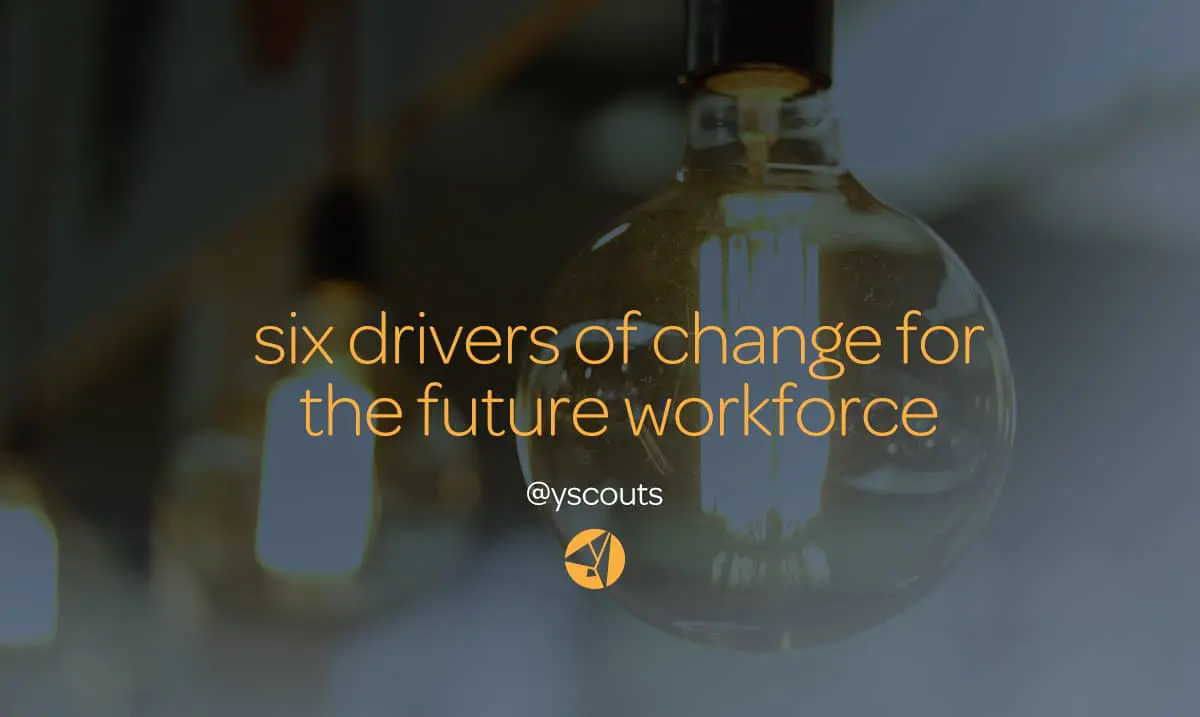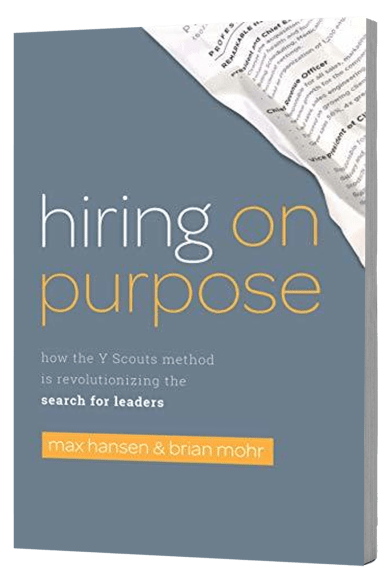With the ever-changing landscape of technology and business, knowing what’s shaping those changes is crucial to staying ahead. The following six drivers of change from the Institute for the Future present a compelling look at the future of the workforce and the needed changes for our education system to teach skills that actually matter.
Global connectivity, smart machines and new media are just some drivers shaping how we think about work, what constitutes work, and the skills we will need to be productive in the future.
Knowing the drivers of change can help you become a better candidate as companies begin to hire we these traits in mind. This knowledge will also help industry leaders recruit top talent who are ready to adapt to the future workforce.
Here are six disruptive shifts that are likely to reshape the future landscape of the workforce:
Table of Contents
Toggle1. Extreme Longevity
Increasing global life spans change the nature of careers and learning. Multiple careers will be commonplace and lifelong learning to prepare for occupational change will see major growth. To take advantage of this well-experienced and still vital workforce, organizations will have to rethink the traditional career paths in organizations, creating more diversity, adaptability and flexibility.
2. Rise of smart machines and systems
Workplace automation nudges human workers out of rote, repetitive tasks. Smart machines will also establish new expectations and standards of performance. We will be entering into a new kind of partnership with machines that will build on our mutual strengths, resulting in a new level of human-machine collaboration and co-dependence as the world digitizes around us.
3. Computational world
Massive increases in sensors and processing power make the world a programmable system. Every object, every interaction, everything we come into contact with will be converted into data. Thus we will usher in an era of “everything is programmable”—an era of thinking about the world in computational, programmable and designable terms. The programable world will begin to solve many of the world’s current issues, simplifying and applying knowledge with smart applications that continue to improve the quality of our lives.
4. New media ecology
New communication tools require new media literacy beyond text. A new ecosystem will take shape around these areas. We are literally developing a new vernacular, a new language for communication between leaders and followers. Between management and staff. At the same time, virtual networks are being integrated more and more seamlessly into our environment and lives, channeling new media into our daily experience without disrupting our desires to connect in person. Social media is beginning to drive social experience as we interact with our virtual and physical worlds interchangeably sharing everything with our networks. Life streaming will likely absorb any last remnant of a life offline, yet we will accept it as it makes us more competitive.
5. Super-structured organizations
Social technologies drive new forms of production and value creation. Amplified by a new level of collective intelligence and tapping resources embedded in social connections with multitudes of others, we can now achieve the kind of scale and reach previously attainable only by very large organizations. In other words, we can do things outside of traditional organizational boundaries. It means to collaborate and play at extreme scales, from the micro to the massive. Learning to use new social tools to work, to invent, and to govern at these scales is what the next few decades are all about.
6. Globally connected world
Increased global interconnectivity puts diversity and adaptability at the center of organizational operations. Communicating with colleagues from all corners of the planet will be the norm for small businesses to multinational power houses. Globalization is the long-term trend toward greater exchanges and integration across geographic borders. In our highly globally connected and interdependent world we will see vast changes of cultural integration and a strong need for cultural sensitivity at the same time.
What do you think are the drivers of change for the future workforce? Is there anything missing on this list? Let us know on our social channels – Facebook, Twitter, & LinkedIn.
Credits: Institute for the Future & Pearl Zhu
Y Scouts is a purpose-aligned, performance-proven leadership search and development firm focused on transforming how people and organizations connect to work that matters. When you’re ready to hire a new leader, Contact Y Scouts. If you are looking for your next leadership role within a purpose-driven, performance-focused organization, please join the Y Scouts Leadership Community





